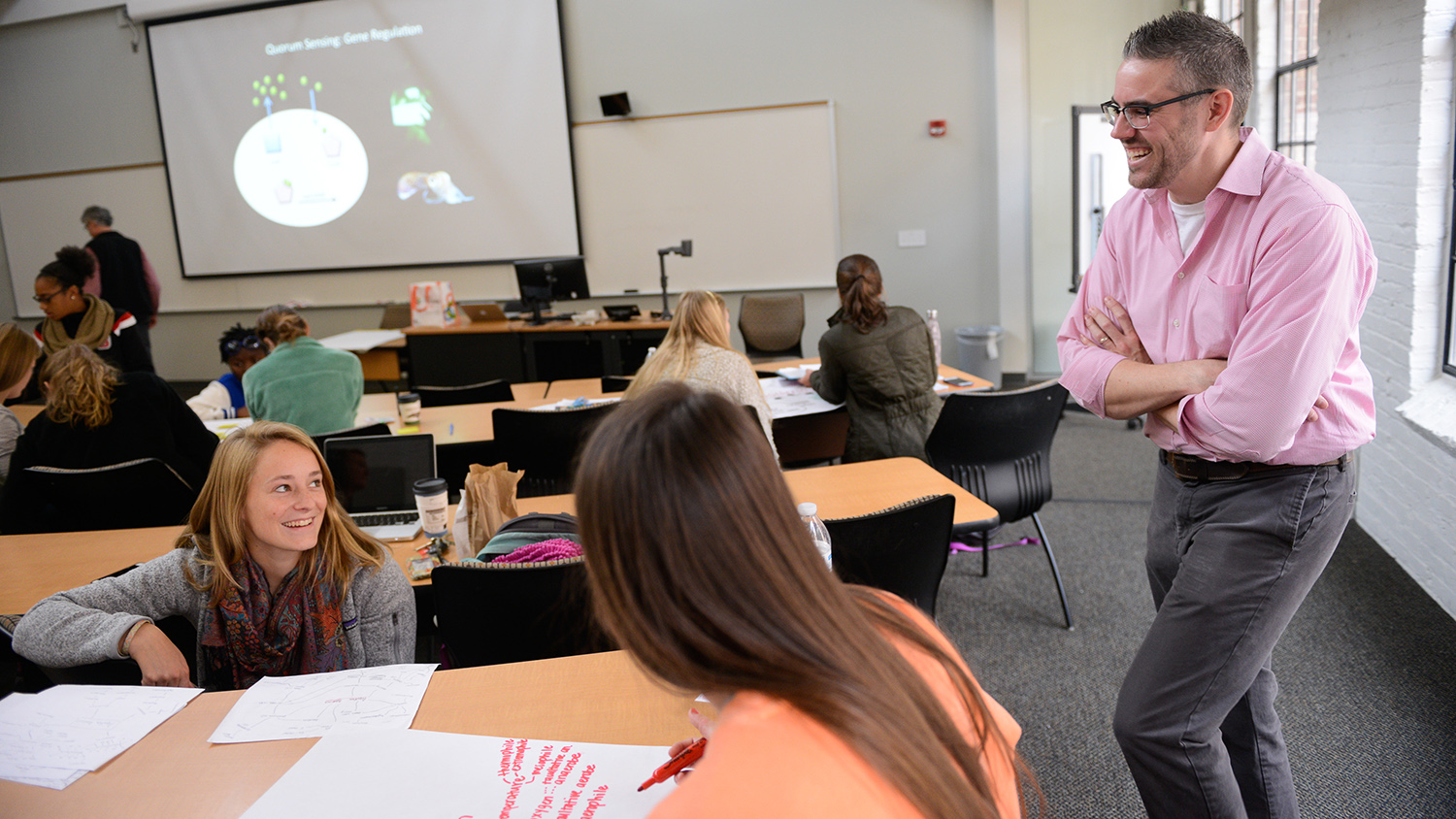Pack Hacks for Faculty: Learner-Centered Classroom Assessment Techniques

Welcome back to Pack Hacks for Faculty. Each month, a member of the NC State faculty will provide quick tips, advice and other insight to facilitate your teaching, research, scholarship or engagement activities. If you are interested in making a submission for a future Pack Hacks for Faculty, please review our submission guidelines and contact provost-communications@ncsu.edu if you have questions.
This month, Amy Neaves, senior faculty development specialist in the Office of Faculty Development, digs into Classroom Assessment Techniques, that encourage learner reflection and demonstrate where learning gaps may exist. Neaves seeks to support faculty by providing the tools necessary to create outstanding scholarship and research through professional collaborative opportunities.
Learner-Centered Classroom Assessment Techniques
 It’s the most wonderful time of the year. That’s right — it’s midterm time. While pumpkin spice everything is now available to help faculty keep calm and grade on, the ongoing struggle to pinpoint more precisely where learners are in the learning process is real. Midterm assessment performance may provide one view, but daily formative assessment can tell us more about students’ content knowledge and skill levels.
It’s the most wonderful time of the year. That’s right — it’s midterm time. While pumpkin spice everything is now available to help faculty keep calm and grade on, the ongoing struggle to pinpoint more precisely where learners are in the learning process is real. Midterm assessment performance may provide one view, but daily formative assessment can tell us more about students’ content knowledge and skill levels.
In-class use of formative Classroom Assessment Techniques (CATs) encourages learner reflection and demonstrates where learning gaps may exist. Planning pauses for reflection about their learning takes little time and faculty preparation, which is a win-win situation. Implementing CATs frequently gives us real-time, prompt feedback that can inform our teaching and consequently impact learner learning. Monitoring teaching and learning throughout the learning process can mutually benefit both faculty and students.
Examples of CATs
Angelo and Cross (1993) established three categories for CATs and a variety of examples of technique implementation.
| Category | Technique | How to Implement | Time Needs |
|---|---|---|---|
| Course-Related Knowledge and Skills | One-Minute Paper | Give students one minute at the end of instruction to note what was the most important thing that they learned and what they understood the least from the lesson. Review their responses after, and address them in the next class through clarification or elaboration. | Low |
| Course-Related Knowledge and Skills | Student-Generated Test Questions | Quickly group students, and assign each group a topic. Each learner writes one question and its answer based on that topic. Use as many of their questions as possible on the next test, combining similar questions. | Medium |
| Attitudes, Values, and Self-Awareness | Journals | Have students keep a journal, electronically or on paper, with thoughts about the class--their goals, perceived progress, input, etc. Collect them a few times throughout the semester to review. Make notes of any changes/progress. | Medium |
| Reactions to Instruction Methods | Suggestion Box | Put a box near the classroom door, and encourage students to drop in anonymous notes about class issues/concerns. Review and address in the next class. | Low to Medium |
| Reactions to Instruction Methods | Exam Evals | At the end of an exam, add a few non-graded questions that ask students how well the test measures their skills and knowledge. Use their responses to reasonably adjust the exam. | Medium |
Learning Pauses: the KWHLAQ Chart
Typically, CATs are anonymous; however, whole-class pre- and post-learning pauses don’t have to be. This can reduce the isolation and anxiety that some students feel, giving them opportunities to connect with their peers, especially in larger classes. One technique for reflective learning is the KWHLAQ chart. Formerly known as the KWL chart, students answer questions about their prior knowledge and learning of a topic.
- Before beginning instruction, have them complete the KWH columns– what they Know, what they Want to know, and How they will learn.
- At the end of the lesson, have learners reflect by completing the LAQ columns what they Learned, how they’ll Apply their knowledge/skills, and what Questions they have.
- Students can complete the chart themselves on paper or online. If synchronously completing online, ask them to bring an internet-capable device (laptop, tablet, smartphone) to class.
Click here to log in on Google Drive and make a copy of this KWHLAQ chart template for your own use. The “Your Name” column can be excluded or changed to the topic so that each student has their own chart to use throughout the semester.
How to Use CATs
- Select one technique to try out.
- Plan out your technique, considering your learners, time, and needed resources.
- Try the technique, explaining your purpose and objectives to your students in class.
- Share your discoveries with your students, and describe how you’ll use the feedback.
Reference
Angelo, T.A., & Cross, K.P. (1993). Classroom assessment techniques: A handbook for college teachers (2nd ed.). San Francisco, CA: Jossey-Bass.
Amy Neaves is the senior faculty development specialist in the Office of Faculty Development. She can be reached at Amy_Neaves@ncsu.edu.
- Categories:



